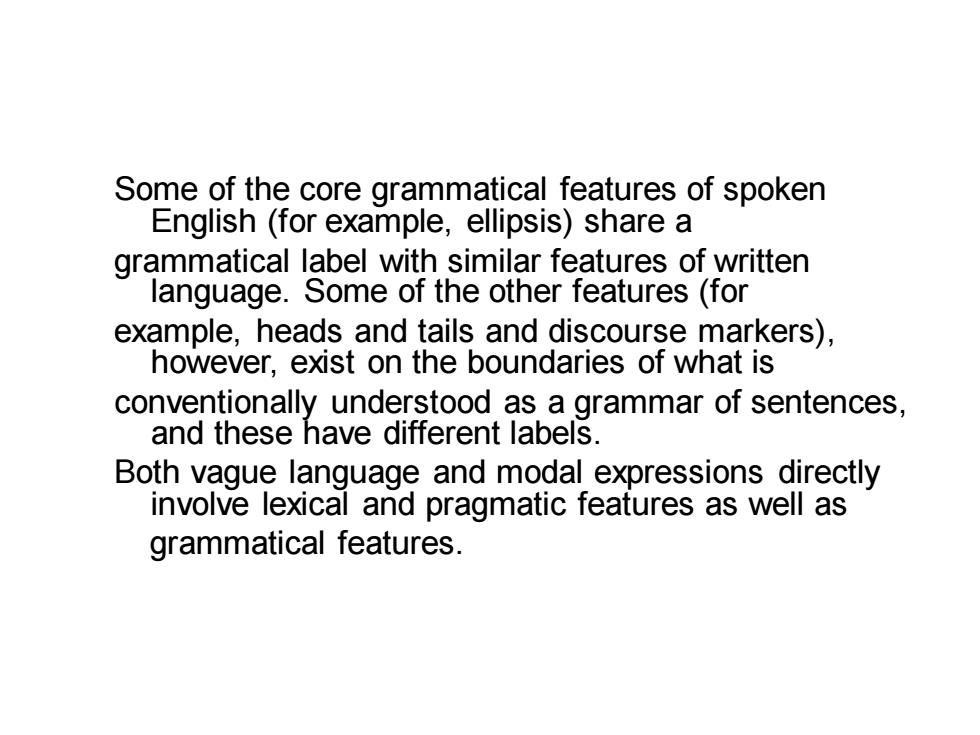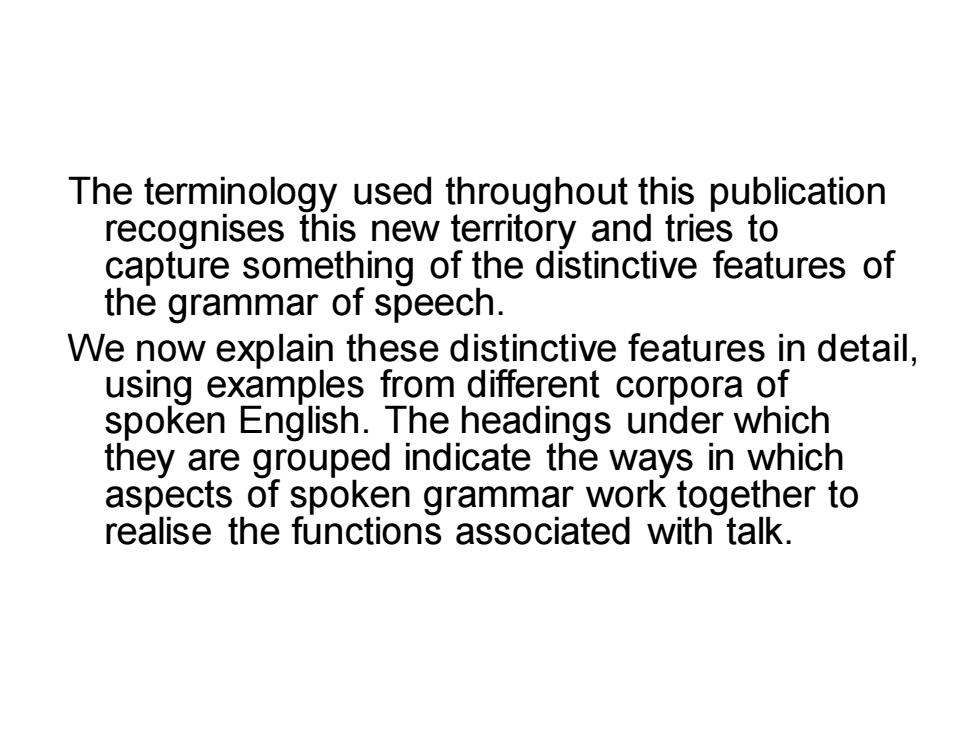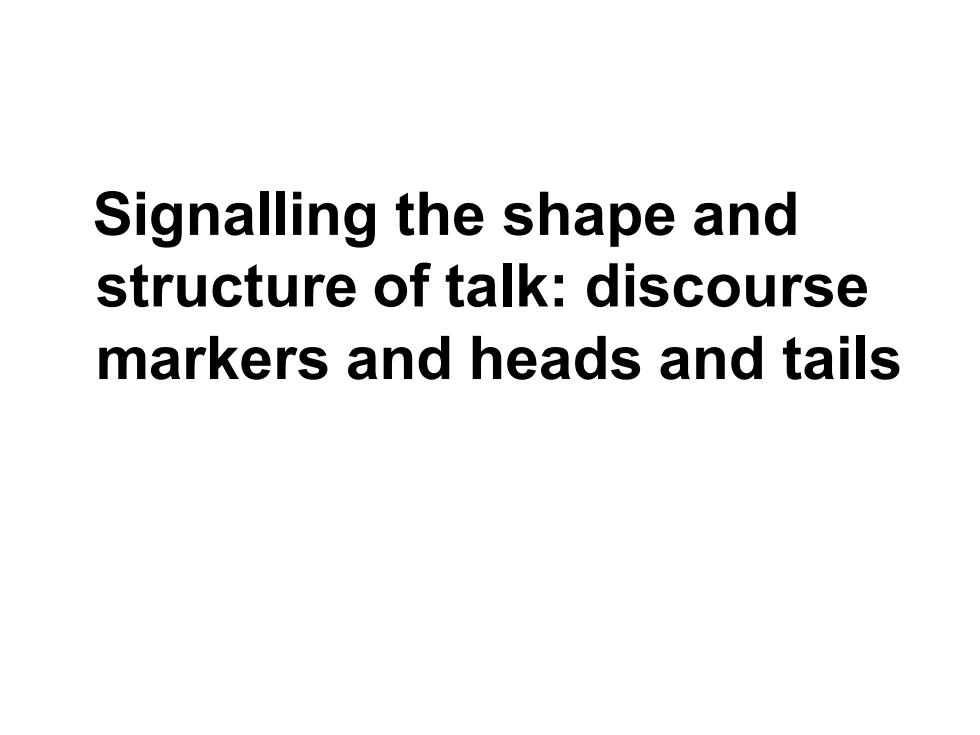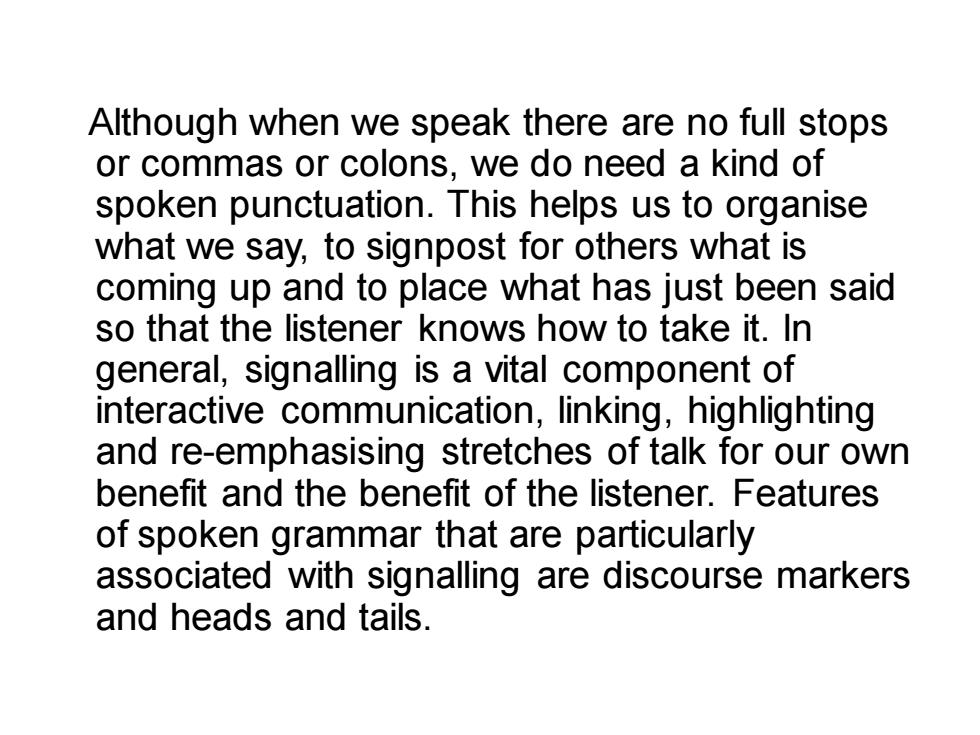
Some core grammatical features of spoken English Prof.Xiao Haozhang ssshaw@scau.edu.cn
Some core grammatical features of spoken English Prof. Xiao Haozhang ssshaw@scau.edu.cn

Some of the core grammatical features of spoken English (for example,ellipsis)share a grammatical label with similar features of written language.Some of the other features (for example,heads and tails and discourse markers), however,exist on the boundaries of what is conventionally understood as a grammar of sentences, and these have different labels. Both vague language and modal expressions directly involve lexical and pragmatic features as well as grammatical features
Some of the core grammatical features of spoken English (for example, ellipsis) share a grammatical label with similar features of written language. Some of the other features (for example, heads and tails and discourse markers), however, exist on the boundaries of what is conventionally understood as a grammar of sentences, and these have different labels. Both vague language and modal expressions directly involve lexical and pragmatic features as well as grammatical features

The terminology used throughout this publication recognises this new territory and tries to capture something of the distinctive features of the grammar of speech. We now explain these distinctive features in detail, using examples from different corpora of spoken English.The headings under which they are grouped indicate the ways in which aspects of spoken grammar work together to realise the functions associated with talk
The terminology used throughout this publication recognises this new territory and tries to capture something of the distinctive features of the grammar of speech. We now explain these distinctive features in detail, using examples from different corpora of spoken English. The headings under which they are grouped indicate the ways in which aspects of spoken grammar work together to realise the functions associated with talk

Signalling the shape and structure of talk:discourse markers and heads and tails
Signalling the shape and structure of talk: discourse markers and heads and tails

Although when we speak there are no full stops or commas or colons,we do need a kind of spoken punctuation.This helps us to organise what we say,to signpost for others what is coming up and to place what has just been said so that the listener knows how to take it.In general,signalling is a vital component of interactive communication,linking,highlighting and re-emphasising stretches of talk for our own benefit and the benefit of the listener.Features of spoken grammar that are particularly associated with signalling are discourse markers and heads and tails
Although when we speak there are no full stops or commas or colons, we do need a kind of spoken punctuation. This helps us to organise what we say, to signpost for others what is coming up and to place what has just been said so that the listener knows how to take it. In general, signalling is a vital component of interactive communication, linking, highlighting and re-emphasising stretches of talk for our own benefit and the benefit of the listener. Features of spoken grammar that are particularly associated with signalling are discourse markers and heads and tails